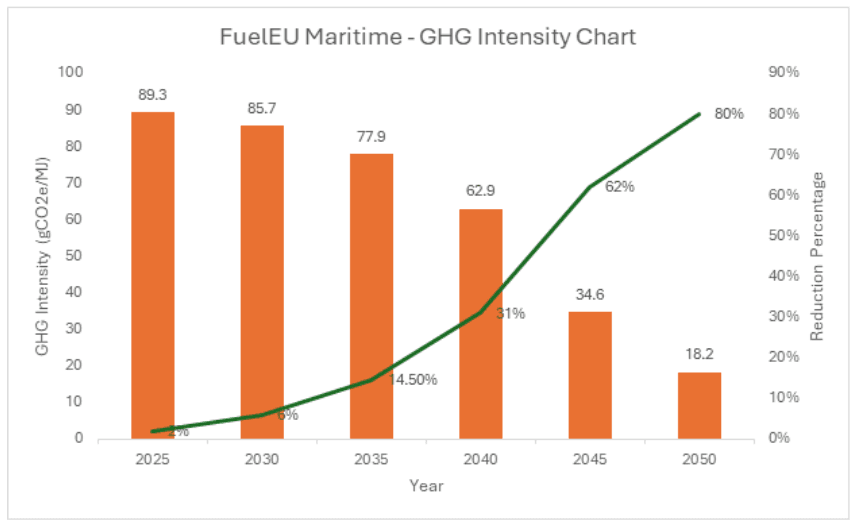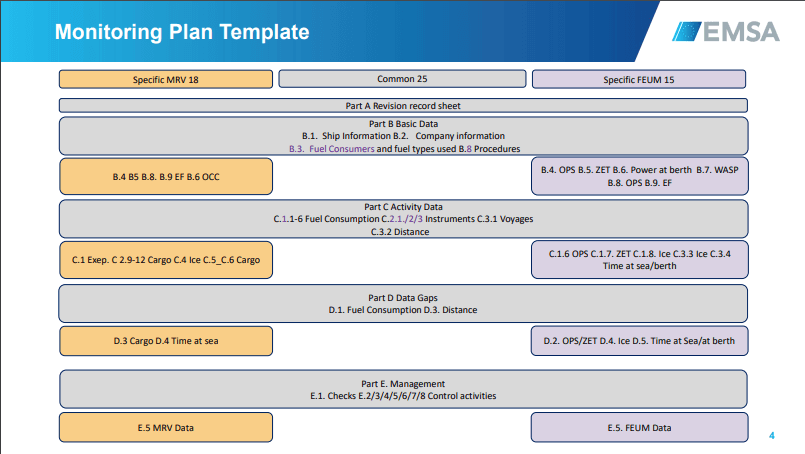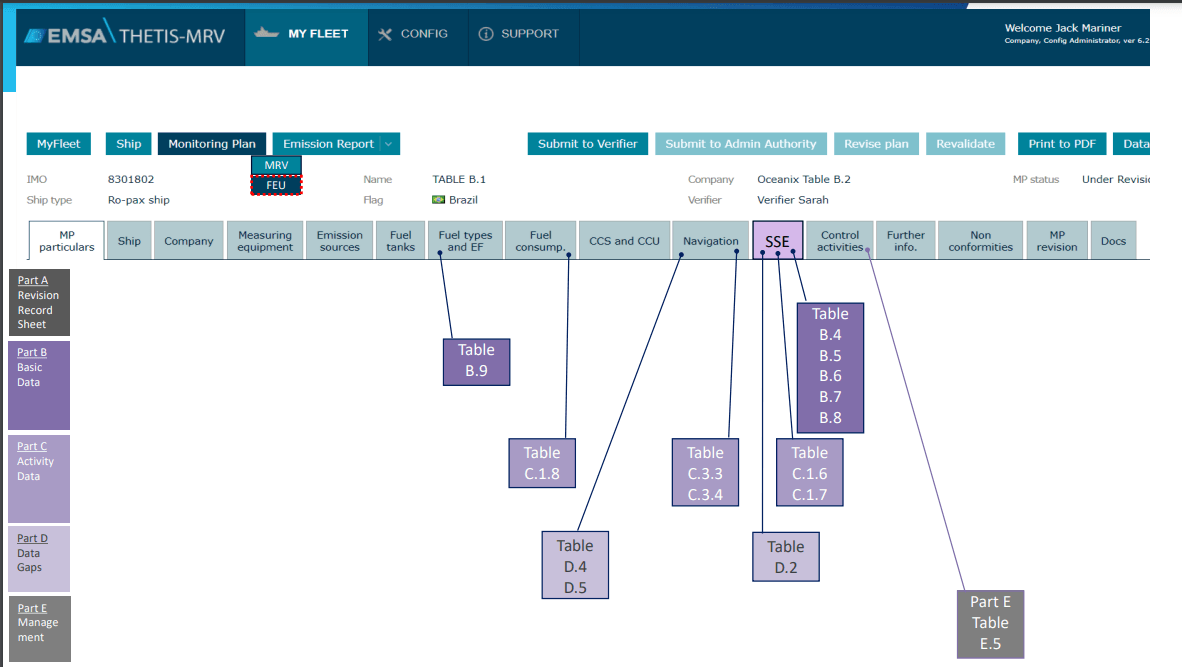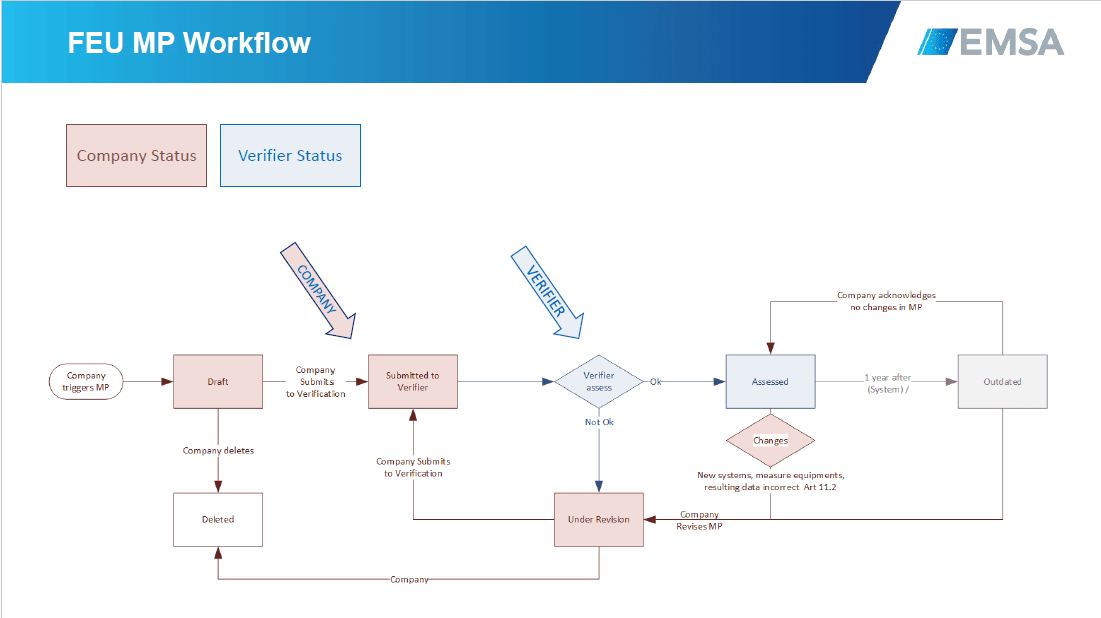FUEL EUM: Monitoring Plan Explained

SummaryIntroduction to FUEL EURequirementsMonitoring planAzolla PromiseShare
-
Share
-
Introduction to FUEL EU
The European Union has introduced the Fuel EU Maritime regulation to boost the use of renewable and low-carbon fuels in international maritime transport within the EU. This initiative sets comprehensive well-to-wake greenhouse gas (GHG) emission intensity standards for energy consumed on ships over 5000 GT operating in the EU. The regulation will take effect on January 1, 2025.
Requirements
FuelEU Maritime adopts a well-to-wake approach to GHG emissions, encompassing the entire lifecycle of fuel—from production and transportation to combustion on the vessel. Compliance will initially involve the use of certified biofuels, LNG, LPG, auxiliary power units (fuel cells), shore power, and wind-assisted propulsion, among other technologies.
As zero or near-zero emission fuels like e-methanol, e-ammonia, and e-hydrogen become more available, these will facilitate adherence to increasingly stringent GHG limits post-2030.
The Greenhouse Gas (GHG) intensity requirements set a benchmark for reducing emissions from a 2020 reference value of 91.16 gCO2e/MJ. These requirements increase once every five years until 2050 ensuring a steady decrease in GHG emissions over time.

Monitoring plan
The first step in ensuring compliance with the FuelEU Maritime regulation is the development and implementation of a comprehensive monitoring plan.
This monitoring plan is crucial for accurately tracking and reporting GHG emissions and fuel consumption. While the EU Emissions Trading System (EU ETS) uses a system of Monitoring, Reporting, and Verification (MRV) for tracking emissions in various sectors, the FuelEU Maritime regulation specifically requires a tailored monitoring plan for maritime activities. By August 31st, ship operators will need to submit their monitoring plans detailing the method for monitoring and reporting data required under this regulation, ensuring they are prepared for the regulation's enforcement.
For vessels newly subject to the Regulation after August 31, 2024, a Monitoring Plan is to be submitted to the verifier within two months following the vessel’s first call at an EU/EEA port.
The FuelEU Monitoring Plan is comprehensive and must include the following key elements:
1. Emissions Sources: Emission sources are to be listed and described, including main engines, auxiliary engines, fuel cells, and waste incinerators.
2. Fuel Types: Fuel types are to be listed and described, such as ‘H2 (Fossil)’, ‘NH3 (Fossil)’, ‘Methanol (Fossil)’, ‘Ethanol’, ‘Bio-diesel’, ‘Hydrotreated Vegetable Oil (HVO)’, ‘e-diesel’, ‘e-methanol’, ‘e-LNG’, ‘e-H2’, and ‘e-NH3’. In cases of fuel blending, each component of the blended fuel is to be considered as a separate fuel.
3. Emission Factors: The emission factor applicable to each fuel type over the reporting period must be identified.
4. Procedures for Data Updates: Procedures are to be described for updating information on emission sources, fuel types, fuel consumption, and activity data per voyage, including distance traveled, cargo carried, and time spent at sea.
5. Control System: A control system is to be outlined, including written procedures for data flow activities, risk assessment, and control activities.
6. Monitoring Procedures: Procedures are to be detailed for monitoring fuel consumption for each fuel type, as well as the energy provided by substitute sources or zero-emission technologies. This includes procedures for monitoring and reporting the well-to-tank and tank-to-wake emission factors of the energy used onboard.

(The image above outlines the revisions between the MRV and FuelEU Monitoring Plans, Source - EMSA.)

(The snapshot above depicts the changes incorporated into the monitoring plan template within the THETIS-MRV Portal, Source - EMSA. )

(Above is the detailed workflow of the monitoring plan, illustrating the steps and processes involved in compliance with the FuelEU requirements, Source - EMSA.)
Azolla Promise
As a leading provider of maritime sustainability solutions, offers extensive experience in crafting compliant FuelEU Monitoring Plans. Leveraging our deep understanding of the regulation and our proven track record in developing MRV plans for numerous clients, Azolla can ensure your monitoring plan is accurate, efficient, and future-proofed.
Contact us support@azolla.sg, to discuss your FuelEU compliance needs and navigate the path towards a sustainable future for your fleet.
Share
-
Contact us today to embark on a journey of discovery.optimization.maritime leadership.discovery.


